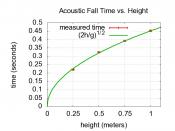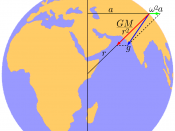1. Objective
The objective of the second experiment of the PH1004 laboratory course is broken down into two parts. In part A, the aim is to determine the acceleration due to gravity of a glider, which runs along a straight line on an air track. A weight will be connected to the glider by a string draped over a pulley to create the necessary acceleration. To understand why objects accelerate, force and mass must be defined. A force can either distort or accelerate an object. When calculating a total force on an object, it is necessary to add the forces as vectors. Newton's first law of motion states that, if the vector sum of the forces acting on an object is zero, then the object will remain at rest or remain moving at constant velocity. Thus, the tendency of an object to resist any attempt to change its velocity is called inertia.
Newton's second law of motion states that a net force on an object will accelerate the object at a rate proportional to the strength of the force and in the same direction as the force. Thus, one can relate mass, acceleration, and force through the following mathematical statement of Newton's second law:
âÂÂF = ma
The attractive force exerted by the Earth on an object is called the gravitational force Fg. This force is directed toward the center of the Earth. The association between the glider's acceleration due to gravity, g, is provided for by the following expression:
Aa = (m/(m + mgl)) * g
The value of acceleration, a, will be computed by utilizing photogates placed above the air track to measure the time intervals of the glider's motion between distinct points.
In part B, the intention is to gauge the acceleration due to gravity of...


